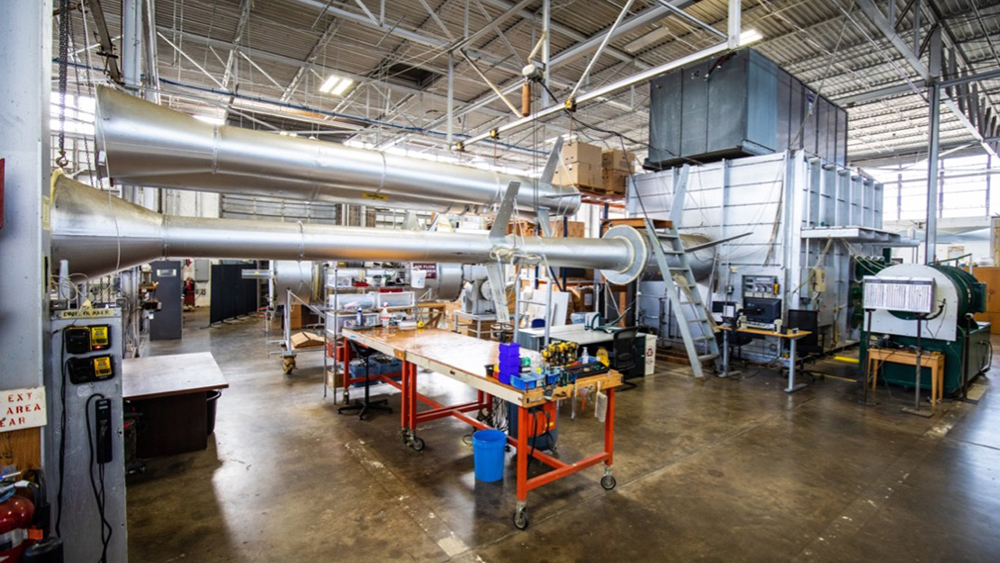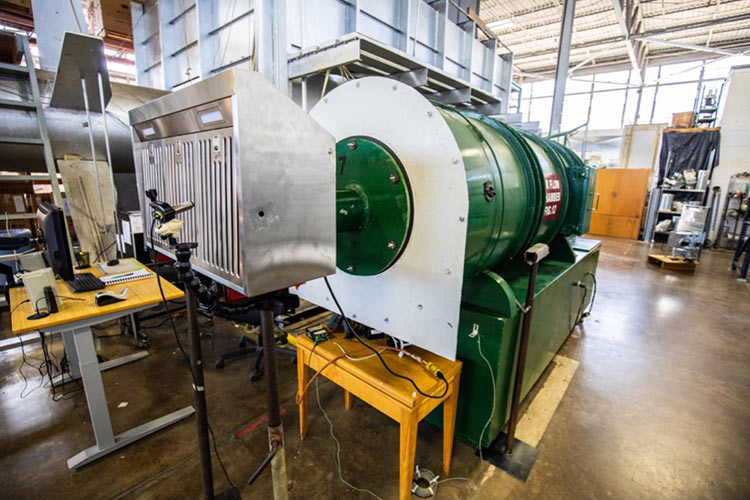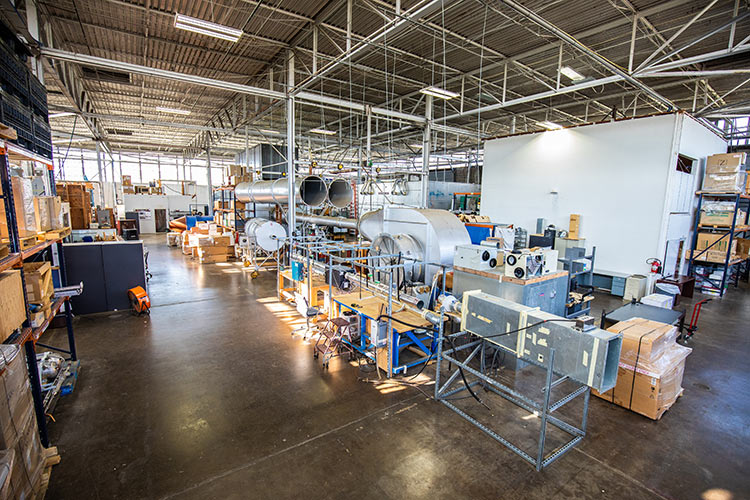
Tucked away in a retired airplane hangar that was originally commissioned for aviation engine mechanics during the Korean conflict, the RELLIS Energy Efficiency Laboratory (REEL) historically and currently contains a transformative space for testing and researching systems such as heating, ventilation and air conditioning (HVAC) for the built environment.
U.S. and Texas history alive and well
Texas A&M-RELLIS was officially turned over to Texas A&M University in the late 1980s as the Riverside Campus and is now a 2,400-acre applied research campus in Bryan, Texas. It remains home to many of REEL’s original airflow measurement chambers.“Airflow chambers at REEL can test fans up to six feet in diameter to a maximum capacity of 50,000 cubic feet per minute,” said Dr. James Sweeney, principal research engineer and manager of REEL. “Our chambers provide industry and academic partners with access to test, validate and improve energy efficiency in delivering quality heating, cooling and ventilation systems for indoor environmental control. The facility has been supporting the fan industry since its inception at Texas A&M. It has a long-standing relationship with the Home Ventilating Institute (HVI), a trade association established in the 1950s for residential fan testing and performance verification.”

Present day
“Our facility is part of the Energy Systems Laboratory, allowing our researchers to collaborate across a variety of engineering specialty areas with regard to building energy efficiency and management,” said Sweeney. “This is particularly important as we have a long-standing relationship with industry and commercial clients such as Trane, General Electric, Broan-Nutone, Greenheck, Panasonic and Bosch in meeting industry-led standards while supporting North American consumers at large.”
REEL also has equipment that supports refrigerant component testing and evaluation, psychrometric testing, heat exchanger and duct termination performance, reverberant room sound testing and more. These areas of research and testing position REEL to serve as one of only three third-party labs nationwide approved to conduct HVI certification testing. It brings more efficiency to heating and cooling systems, advancements in air circulation components and reduced noise on systems found in residential properties.
As an HVI, Energy Star and California Energy Commission-designated laboratory, REEL is approved to provide certification airflow and acoustic testing for a variety of ventilation devices used both in residential and commercial building applications. One area within the lab that is particularly novel includes a simulated kitchen for rangehood capture efficiency and an adjacent sound room for appliance sound testing.
Developing research and standards
To test electric range vent hoods’ capture efficiency, lab researchers under the leadership of Sweeney and Dr. Michael Pate, REEL director, designed an enclosed chamber using structural insulated panels, a prefabricated airtight wall system. Teams can simulate a variety of real-life scenarios and situations that occur in a residential kitchen space and identify a system’s rate of efficiency in circulation, removal of harmful emissions and overall promotion of a healthier indoor environment.
Next door to the kitchen simulation area is a low-ambient background noise acoustic room where researchers can determine the sound pressure levels of operating range hoods, other ventilation products and home appliances.
“By selecting products that have the HVI-certified label, consumers can have confidence that the item has been rigorously tested not only for energy efficiency but for other indoor environmental factors as well,” said Sweeney. “This includes but is not limited to sound output from the system itself and proper ventilation of a room to promote healthier, cleaner, better-quality indoor environments.”

Smart building research
In addition to the aforementioned facilities, REEL is home to smart building research under the leadership of Dr. Zheng O’Neill. The Texas A&M Heat Pump Testbed is operated by the Texas A&M Building Energy and HVAC&R Research Group for research, evaluation and development of heat pump-based technologies for next-generation efficient buildings. The testbed has the ability to control and capture the heat pump operation dynamic. This offers a unique research and development opportunity for prototyping and testing heat pump technologies and developing intelligent algorithms for control and diagnostic-enabling, grid-interactive and energy-efficient buildings.
The Texas A&M Smart and Connected Home Testbed (TAMSCHT) is also adjacent to REEL and has been developed by and is operated by the Building Energy and HVAC&R Research Group for the research and development of smart, connected, energy-efficient and grid-interactive technologies for residential buildings. Constructed with an aim to create a well-monitored environment that replicates how normal homes operate, the TAMSCHT offers a unique testbed in a hot and humid climate to test emerging residential technologies in simulated “existing home” environments with two identical and physically adjacent homes — a baseline home and an experimental home.
Residential building design outreach
In addition to industry and academic-sponsored projects, REEL also offers collaboration with clients interested in pursuing a level of building energy efficiency and sustainable design only attainable through expert planning and consultation. Recently, Sweeney helped guide Houston resident and founder of Nautilus Custom Homes, Dr. Hugh Ker Thomson, in identifying systems, materials and products to create a residential home with the highest level of building performance.
Student research and career developmentIn all of these activities, REEL offers support for academic research projects that provide undergraduate, graduate and post-doctoral students with an opportunity to advance their education and careers in mechanical and architectural engineering for the built environment. Teaming with principal investigators at Texas A&M, students expand their knowledge base while supporting advancements in technology and processes that ultimately impact everyday lives and building infrastructure.
